The treatment of ocular motility disorders in adults includes conservative and surgical treatment. Conservative treatment involves correction of the refractive error and the use of prism glasses. Surgical treatment involves strabismus surgeries and botulinum toxin injections.
Strabismus – surgical treatment
Possible indications for surgical treatment of strabismus may be:
- Functional – achieving orthoposition (normal eye alignment in the straight position) and binocular single vision;
- Cosmetic – achieving orthoposition (possible lack of permanent effect in high degree amblyopia).
At the Eye Surgery Centre in Nałęczów, we perform strabismus surgeries in adults with the use of adjustable sutures. This method reduces the risk of postoperative diplopia, and enables a change in the eyeball position already after the surgery. The first step is a surgery under general anaesthesia, and the second step, on the next morning, is adjustment of sutures under local anaesthesia.
Indications for surgery with adjustable sutures:
- cooperating patient,
- reoperations (repeated surgeries in previously operated patients),
- strabismus related to muscle restriction (thyroid myopathy, orbital break after scleral buckling),
- non-concomitant strabismus (Duane syndrome, paralytic strabismus),
- combination of horizontal and vertical strabismus,
- high risk of postoperative diplopia.
Strabismus surgeries are performed without age limitations, also in patients over 60. The most frequent indications for surgery in this age group are: diplopia related to fourth or sixth nerve palsy, thyroid myopathy, iatrogenic vertical strabismus after cataract surgery, reoperations, large-angle horizontal strabismus.
Contraindications for strabismus surgery are as follows:
- general condition which prevents general anaesthesia,
- high risk of anterior segment ischaemia, haematological diseases, cardiovascular system diseases,
- high risk of necrotising scleritis – severe systemic diseases.
The use of botulinum toxin
Indications for botulinum toxin injections
- symptomatic phoria (decompensated exophoria or esophoria),
- small-angle strabismus – up to 20 Δ,
- postoperative residual angle or overcorrection,
- paralytic strabismus – sixth nerve palsy, VI,
- early phase of thyroid myopathy.
Contraindications
- hypersensitivity to botulinum toxin,
- expected lack of effect,
- non-cooperating patient,
- myasthenia gravis.
Course of the procedure
Injections are performed under local anaesthesia, guided by acoustic electromyograph. The onset of the drug activity is after about 2-3 days; the effect is maintained from about 3 months up to a year or longer. The most frequent side effects of botulinum toxin injections are ptosis, diplopia, vertical deviation, headache. The symptoms usually disappear after 2-6 weeks.
FAQ
During a basic ophthalmological visit, the patient’s ophthalmological history is taken, and the following examinations are conducted: autorefraction, keratometry, intraocular pressure measurement, visual acuity examination, slit lamp examination and fundoscopic examination.
In most cases, yes. If the doctor decides that some additional examinations are necessary, they may be performed during the visit, or if the doctor does not perform that kind of examinations, the patient is referred to another specialist.
An ophthalmological visit with performance of basic examinations lasts about 20 minutes. In some Centres, the examinations being part of the visit are performed by auxiliary personnel in the examination room. These activities are also included in the time of the basic visit.
Yes, it is recommended that contact lenses be removed before the visit. The patient should bring the lenses to the visit, since the doctor may ask the patient to insert them.
The cost of a visit is as per the price list on our website.
The waiting time for a private visit is up to a week. This time may be longer if the patient wants to see a particular specialist. The waiting time for a National Health Fund visit is according to the waiting list. Please call or e-mail us to appoint a specific date.
Yes, but you should inform the doctor that you would like to select glasses or lenses at the beginning of the visit.
Yes, you should normally apply your eye drops.
An ophthalmological visit does not require special preparation. If this is your first visit at the centre, you should have the identity card, which is necessary to create a patient record. Also remember that in most cases it is not allowed to drive a car after an ophthalmological visit.
During the first visit, the doctor takes the patient’s ophthalmological history. If the patient has any ophthalmological documentation from other institutions, it is worth taking it to the visit.
You can return to work/school after the ophthalmological visit, but please remember that if you received eye drops at the visit, your vision may be disturbed and blurred for about 2-3 hours.
Ophthalmological check-ups is an individual matter. The doctor usually informs the patient during the visit when he/she should return. Patients over 50 should have a check-up at least once a year.
If you received pupil-dilating drops at the visit, you must NOT drive a car directly after the visit. You should wait for about 2-3 hours.

